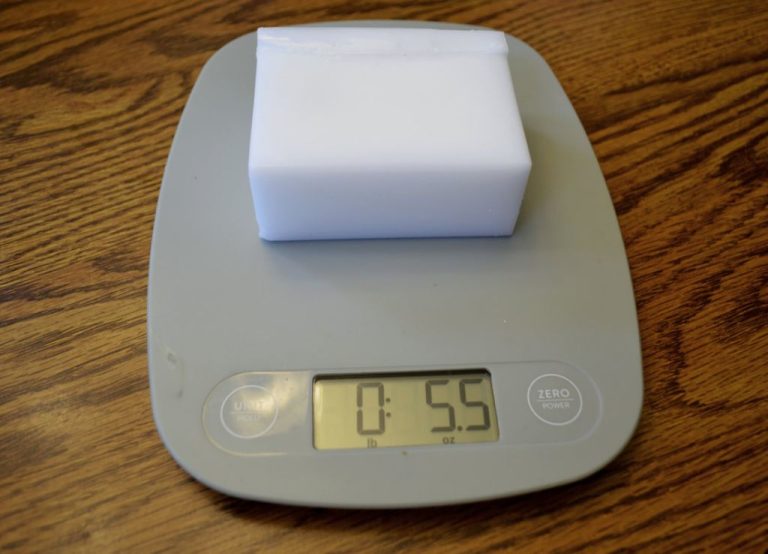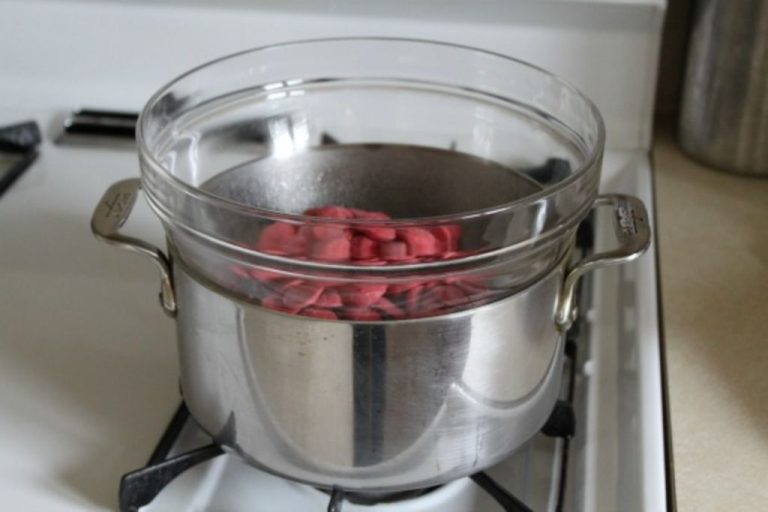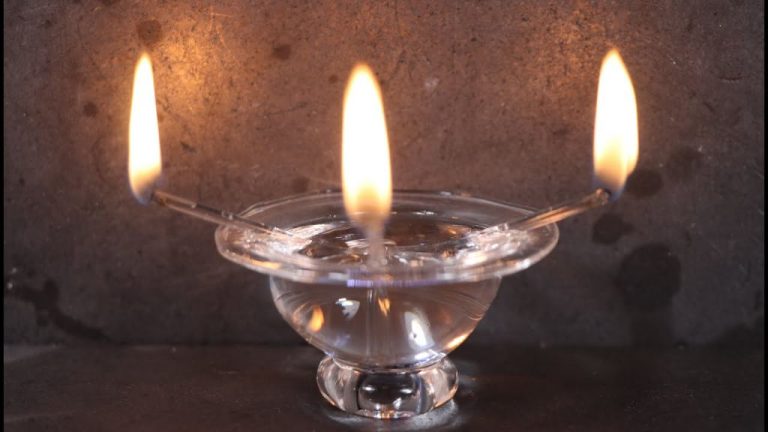What Is A Wick Setter?
What is a Wick Setter?
A wick setter is a small tool used in candle making to center and straighten candle wicks (https://www.candlescience.com/equipment/ez-wick-setter-single/). Its purpose is to ensure proper wick placement and alignment in candles, particularly container candles.
When making a candle, it’s important that the wick stands straight up in the center of the container. An off-center or crooked wick can create an uneven burn, tunneling, or a dangerously large flame. This is not only unattractive but creates a fire hazard.
A wick setter allows candle makers to neatly center and straighten wicks before the wax hardens. It typically consists of a weighted base with a handle and vertical shaft. The shaft has notches, grooves or holes designed to hold wick tabs securely in place.
By lowering the wick setter straight down into the container, the wick becomes properly positioned. The tool holds the wick upright and centered as the wax cools and solidifies. This helps ensure proper wick placement and a safe, high-quality finished candle.
History of Wick Setters
Wick setters were invented in the mid-19th century as candle wicks evolved from simply twisted strands of fabric to more complex braided designs. As wicks became more intricate, a tool was needed to properly set them into the candle wax. The first wick setters were simple metal devices that allowed candle makers to position and straighten the wick before pouring wax into the mold.
Over time, wick setter designs expanded to include different tip shapes and sizes to accommodate various wick thicknesses and materials. They evolved from purely functional tools into decorative pieces made from materials like brass, silver, and bone. Antique wick setters from the Victorian era featured elegant engravings and detailed handles. Modern wick setters may incorporate silicone tips and plastic handles while still serving the same essential purpose.
According to the Candlewic: Candle Making Supplies history pages (https://candlewic.com/about-candlewic/history-of-candlemaking/), the braided wick was invented in the 19th century around the same time wick setters emerged. This demonstrated the need for a tool to properly install the new wick style into candles. Wick setters enabled the positioning and anchoring of braided wicks to create a centered flame in candles.
While candle wicks and production methods have continued advancing, the basic wick setter design endures as an essential part of candle making. Contemporary versions carry on the original purpose of their 19th century predecessors.
Types of Wick Setters
There are a few main types of wick setters that vary in design and construction material:
Plastic Wick Setters
Plastic wick setters like the Multi E-Z Wick Setter Tool are common and affordable options made of durable plastic. They often feature multiple plungers to center different sized wicks. Plastic wick setters are lightweight yet sturdy.
Metal Wick Setters
Metal wick setters such as stainless steel models provide maximum durability for frequent use. The rigid metal construction allows consistent wick placement. Some metal wick setters come with interchangeable plunger heads to accommodate different wick sizes.
Silicone Wick Setters
Silicone wick setters like the Wick Stick offer a flexible material that can pick up and release wicks smoothly. The soft material allows gentle centering without damaging wicks. Silicone resists high temperatures from hot wax.
Custom Wick Setters
Some candle makers create custom wick setters crafted from wood, acrylic, or other materials. These provide fully customizable options, but require DIY construction skills.
How to Use a Wick Setter
Using a wick setter properly ensures your candle wick is centered and secured in place for an even burn. Follow these step-by-step instructions for using a wick setter:

- Prepare your candle vessel by making sure it is clean and free of debris. Place the vessel on a flat, sturdy surface.
- Take a wick tab sticker and peel off one side’s backing. Apply the sticky side of the tab to the base of your wick.
- Position the wick tab sticker with wick attached centered at the bottom of the vessel. Press firmly to adhere it in place.
- Load wax into the top reservoir of the wick setter tool. Let it preheat for a minute.
- Position the preheated wick setter over the wick tab in your vessel. The wick should align through the center aperture.
- Press down firmly and hold the wick setter in place for about 10 seconds as the wax melts and adheres the wick.
- Carefully lift the wick setter straight up and away. The wick should now be secured vertically in the center.
- Repeat this process to set wicks in multiple vessels. Allow the wax to fully harden before pouring additional wax.
Following these steps will result in properly centered and anchored wicks, leading to clean candle burns. For a helpful visual guide, see this wick setter tutorial.
Benefits of Using a Wick Setter
Wick setters provide several benefits over other methods of centering a wick in a candle vessel.
Using a tool designed specifically for wick centering ensures the wick is placed perfectly in the center every time. Properly centered wicks burn more evenly, preventing tunneling where the sides of the candle melt faster than the middle. Centered wicks also promote full melt pools and minimize issues like drowned wicks (According to “Wick Setter” from NordicCandleSupply.com).
Wick setters are quick and easy to use. Simply place the tool in the vessel, insert the wick through the hole or notch, and you’re done. This enables efficient, high-volume production when making multiple candles. It’s much faster than eyeballing wick placement or trying to center it by hand.
The consistency achieved with a wick setter leads to a higher quality, better burning candle. Hand centering can lead to slight variations in placement each time. A wick setter eliminates human error and ensures precision placement every time a candle is made.
Models with more than one wick notch allow centering multiple wicks simultaneously. This streamlines the process for candles with more than one wick, like container candles.
For candle makers and crafters, wick setters are an inexpensive tool that improves the burn quality of candles. Their ease of use makes the small upfront investment worth it for the time and frustration they save.
Common Mistakes with Wick Setters
Using a wick setter incorrectly can lead to some common mistakes that negatively impact your finished candle. Here are some key things to avoid when using a wick setter:
Not centering the wick properly is one of the most common mistakes. A wick that is off-center may not burn evenly, tunnel, or extinguish itself according to Thoughtful Candles. Taking the time to correctly center your wick using a wick setter will prevent many issues.
Another mistake is moving the wick after inserting it into the wax. The wick needs to remain undisturbed while the wax fully sets up. If the wick shifts, it can become off-center or move too close to the container’s sides. As this candle making tutorial describes, gently inserting the wick with a wick setter and not disturbing it leads to the best results.
Not using the properly sized wick setter for your wick and container is also problematic. As outlined by Stone Candles, using the wrong size wick setter can result in an incorrectly positioned wick and other issues that impact performance. Using the specifically designed setter for your wick size and container dimensions prevents mistakes.
Wick Setter Alternatives
There are a few other tools that can be used instead of a traditional wick setter to help center candle wicks:
Chopsticks or skewers: Wooden chopsticks or bamboo skewers can be used to push wicks into the center of a candle. This is a simple DIY method using common household items. However, chopsticks don’t always keep wicks perfectly straight.1
Wick stickers: These are small adhesive dots that stick to the bottom of wicks to hold them in place while the wax cools. Wick stickers are very inexpensive and easy to use. But some find they don’t adhere as strongly to natural wax compared to paraffin wax.2
Paper clips or clothespins: Bending a paper clip into a “V” shape or using a clothespin can help center wicks. This is another easy DIY method, though not quite as precise as a dedicated wick setter tool.
Overall, while common household items can be repurposed to center wicks, a specially designed wick setter tool often does the best job keeping wicks perfectly straight and centered.
Wick Setter Maintenance
Taking proper care of your wick setter tool will help it last longer and function properly. Here are some tips for cleaning and storing a wick setter:
After each use, wipe down the wick setter with a paper towel to remove any excess wax. Then use candle wax cleaning solution or isopropyl alcohol on a paper towel or cotton pad to remove any remaining residue. Take care not to soak the wick setter in liquid, just use a lightly dampened towel. Allow to fully dry before storing.
Periodically check for wax buildup in crevices or joints of the wick setter. Use a toothpick to gently scrape away any hardened wax. Avoid using metal tools which could scratch the surface.
Store the wick setter in a clean, dry location away from heat and light when not in use. Place in a resealable plastic bag or wrap in paper to prevent dust buildup.
Do not immerse the wick setter in water or cleaning solutions for extended periods, as this can damage the tool. Avoid using harsh chemicals or abrasives.
Inspect for damage before each use. Replace the wick setter if pieces become bent, joints become loose, or the tool no longer functions properly.
With proper maintenance between uses, a quality wick setter tool can last for many candle making projects.
Where to Buy Wick Setters
Wick setters can be purchased from a variety of online retailers that specialize in candle making supplies. Some popular places to buy wick setters online include:
Lone Star Candle Supply – Sells the E-Z Wick Setter Tool that centers and adheres wicks with a plunger.
Norden Candle Supply – Offers a wick centering kit with tools to center wicks at the bottom and top of vessels.
Wick setters are also available on Amazon by searching for “wick setter”. Various styles and multi-pack options exist there.
Brick and mortar craft stores like Michael’s, Joann Fabrics, and Hobby Lobby also typically carry wick setters and kits in the candle making section. Local candle making and soap making specialty shops may offer wick setters as well.
For the best selection and prices, purchasing wick setters online is recommended. But retail stores can be a convenient option for quick purchases or when needing a wick setter right away for a project.
Wick Setters for Different Candles
Wick setters work a bit differently depending on the type of candle you are making. The size and shape of the candle container as well as the wax type used can impact how a wick setter functions.
For container candles like jars and tin candles, you’ll want to use a wick setter with a base that fits the bottom of your container. This allows you to center the wick perfectly before pouring wax into the container. Popular options like the EZ Wick Setter come with interchangeable bases to accommodate different jar and tin sizes.
Pillar candles and votives usually require a specialized wick setter with a plunging mechanism to embed the wick into the solid wax. The Norden Wick Centering Kit includes a conical wick setter for precisely positioning wicks in round pillar molds.
For softer wax like soy, a more sturdy wick setter with stronger adhesion may be needed to hold the wick in place during pouring. Wick setters with silicone bases generally work better for soy wax compared to basic plastic bases.
No matter what candle design you are making, using the properly shaped wick setter for your container is key. This ensures the wick gets centered accurately so your candle burns evenly without issues like tunneling.





